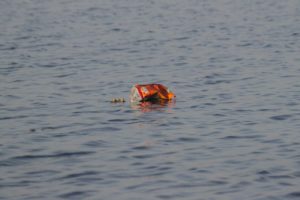 An impending terrible hazard many least know about sits in the Northern Pacific region. Our delicate ocean ecosystem stands threatened if the problem persists and less attention is given on addressing the issue. Apparently, innumerable industrial activities take place around this region. Thanks to the growing London-based activities in North America and Asia. Unfortunately, this has had its own share on marine degradation. Furthermore, humans, boats, large cargo ships, offshore oil rigs, fishing nets, name them, have also had a fair portion in contributing towards this terrible menace.
An impending terrible hazard many least know about sits in the Northern Pacific region. Our delicate ocean ecosystem stands threatened if the problem persists and less attention is given on addressing the issue. Apparently, innumerable industrial activities take place around this region. Thanks to the growing London-based activities in North America and Asia. Unfortunately, this has had its own share on marine degradation. Furthermore, humans, boats, large cargo ships, offshore oil rigs, fishing nets, name them, have also had a fair portion in contributing towards this terrible menace.
The Pacific Garbage Island, otherwise known as the “trash vortex”, is a huge garbage patch covered in a world of plastics and a host of other unrecycled non-biodegradable waste items. Shockingly, it’s estimated that the patch covers an area twice the size of the continental United States.
It’s linked to two areas namely:
I) Western Pacific Garbage Patch
This area is located in a gyre, normally caused by currents, eddies and wind conditions, located on the coastline of Japan.
II) Eastern Pacific Garbage Patch.
Located between Hawaii and California, this area boasts of unnatural marine junk. Experts, however, have been held to a difficult task establishing the exact amount of junk in the area due to the rapid movements and changes.
Moreover, several studies speculate that this might not be the only marine debris patches within the pacific region.
Effects on Marine Life and Shoreline
Not only does this garbage affect the marine ecosystem, but humans too get affected. Somehow, the debris normally make their way into the food chain and humans and animals alike, through consumption, feed on them. According to Greenpeace, close to 267 marine species have been victim to the negative effects brought about by the marine junk.
At the same time, there’s enormous accumulation of plastic wastes on the shorelines, specifically on the beaches, which has affected the life of creatures that live along the shorelines due to ingestion of the debris.
Solutions
As this menace continues to be more tragic, so does the need for sustainable waste management solutions for the sea.
You should note that these areas are typically very large. One proposed solution has been trawling. However, it has been noted that the method presents so many risks to marine creatures that have made the waste areas their home.
Mid-ocean areas are neither owned or controlled by any country. Cleaning up this area might cost a huge sum of money which no country might be willing to raise. Thus, it’s a global issue that needs collective efforts and cooperation from the majority of the countries.
However, campaigns, social and economic awareness programs such as the Sea Change Campaign and the international coastal cleanup events, have emerged and they solely focus on sensitizing the masses on proper waste management and the sea. Other initiatives that can as well help address this challenge include:
• Eliminating the use of disposable plastics
• Purchase of reusable water bottles.
• Proper recycling
• Stopping reckless disposal of hazardous materials
• Self-responsibility i.e. ” Keeping the environment clean starts with you”
Bottom line
Ocean pollution is a global issue that affects everyone on the planet. However, you can be part of waste management and the sea restoration efforts by choosing to make a difference today.
